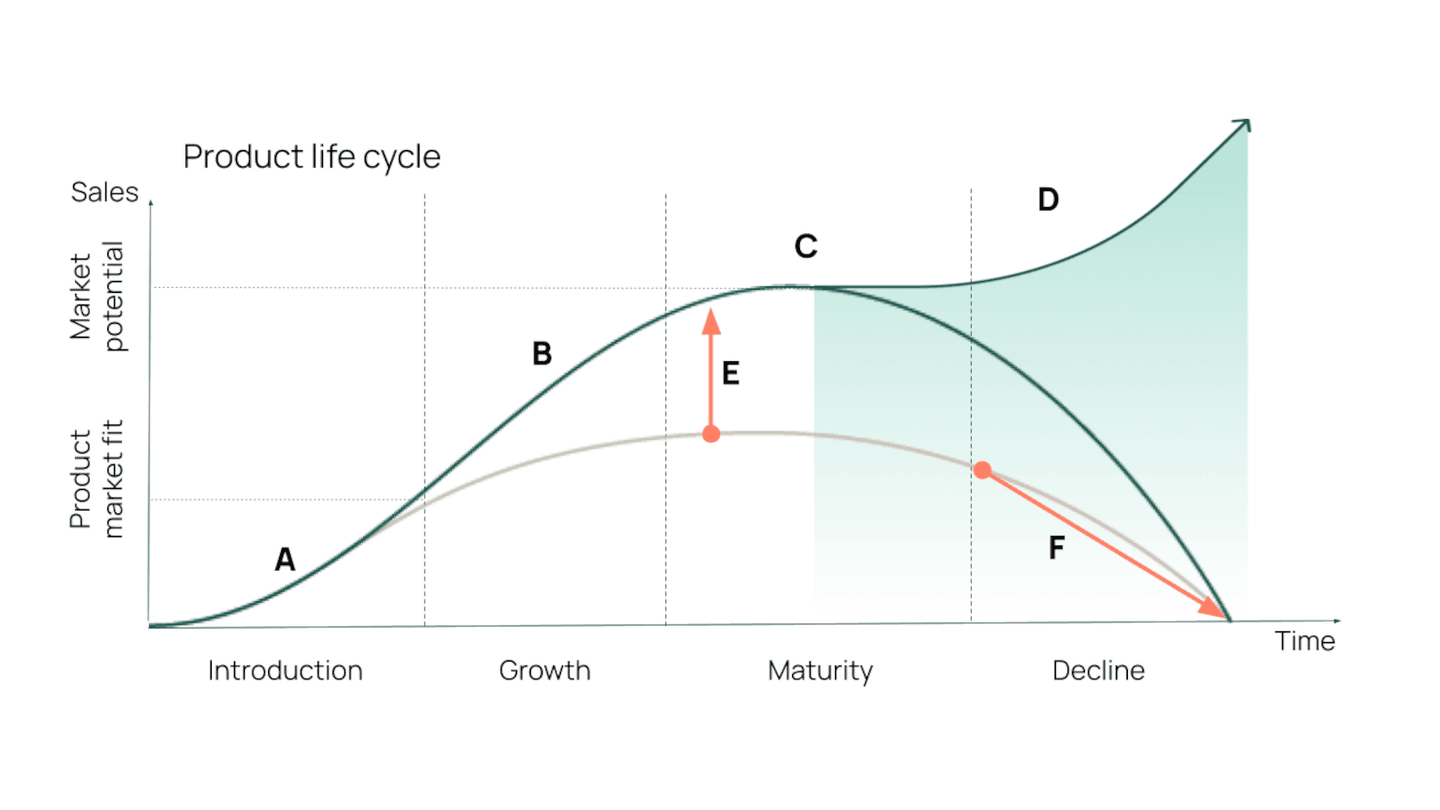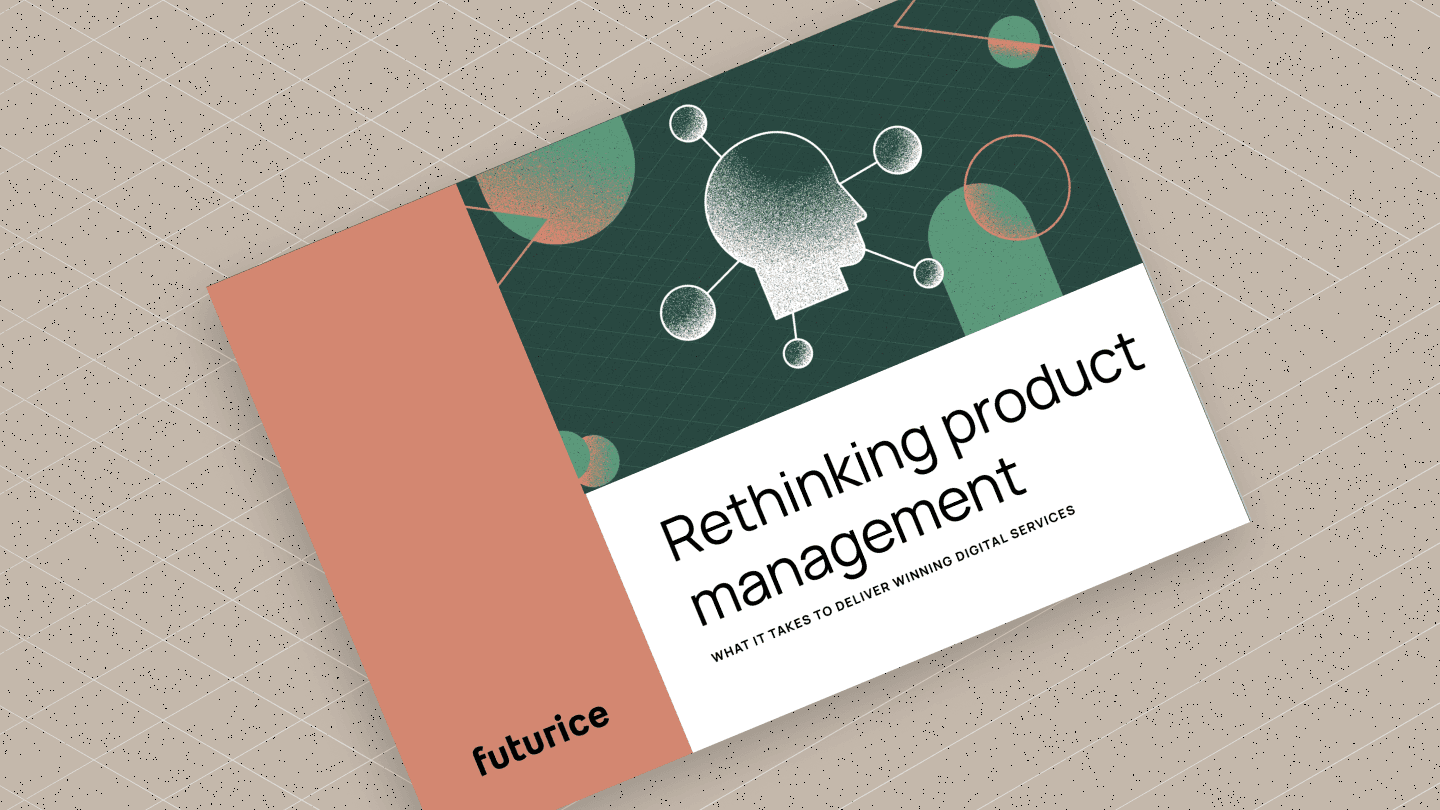Aligning product lifecycle with strategy for optimal business impact
Although the gap between digital products and business objectives is not as wide as it once was when products were driven purely by technology, aligning the two still proves challenging in many instances. In this article, we will discuss how viewing your digital products through the lens of their lifecycle and adjusting your product strategy accordingly can propel a product towards business success.

Connecting digital products to business impact
For a business, one of the primary goals is growth, typically measured by revenue. Nowadays, companies are investing in digital products (or services, if you wish) with the hope of generating value for their customers and/or employees. This value, in turn, is expected to directly or indirectly improve overall business performance.
However, there is often a significant disconnect between the products being built and the business's expectations of their contribution.The disconnect goes both ways: products often fail to demonstrate how they justify their investment, while businesses undermine product success by disregarding the necessary process for achieving the most significant impact.
So how do we connect the contribution of digital products to the overarching goals of the business and evaluate their impact? And how do we teach a business to understand the process through which the product should progress in order to become a success? Our digital products naturally progress through lifecycle phases: introduction, growth, maturity, and eventually decline. By leveraging the product lifecycle framework along with a fitting product strategy, both the business and product team can better understand the goals and actions needed at each stage to maximize potential and ensure successful transitions. It is crucial to align the objectives of business, product, and technology with our current phase in this long-term project to focus on what truly matters now.

Mastering the introduction: discover your first product-market fit
It all starts with an initiative to introduce a new digital product to the external market or an internal company domain. The introduction phase (A) requires significant effort and is frequently oversimplified. There's a common misconception that creating a minimal viable version of the product and launching it to the market will propel us into the growth phase, and if we simply keep building it further the growth is guaranteed. However, the reality is often far more complex and requires careful planning, iteration, and adaptation based on user feedback and market dynamics - essentially, discovery. Without properly addressing this phase, the product may never successfully transition to growth. This phase is inherently very risky; no one can guarantee the success of the original idea. Yet, when executed and overseen correctly, there is a significant chance of finding the idea and implementation that sticks.
During the introduction phase you need to find your first product-market fit, the worst thing you can do for your product is lock yourself in a rigid plan, heavy technology approach or unverified concept. Until we achieve product-market fit, extensive technology implementations and heavy investments in marketing may yield little to no return. We need to build, measure, and adapt very quickly— striving to be as lean as possible. It's crucial to seek knowledge and market acceptance during this phase. Only when the market begins to pull the product without needing significant pushing do we start to see the first signs of growth.
Maximizing growth: strategy for sustainable product expansion
The growth phase (B) is a critical time for leveraging market awareness and expanding market share. Often, in our eagerness to grow, we start to make rather common mistakes. B2B businesses tend to over-customize products to meet specific client needs, which quickly begins to dilute their core offering. This leads to a stack of unscalable and barely maintainable solutions that only meet user needs at the minimum level and serve many, but no one well. In B2C, we can often experience "phantom" growth. This refers to short-term sales spikes driven by marketing efforts that don't translate into sustained value. Effective marketing is crucial, but it’s wasted if digital solutions fail to retain users or convert them into paying customers.
Absence of a sustainable growth strategy
These issues highlight the absence of a sustainable growth strategy focused on long-term engagement and loyalty rather than short-term gains. It also suggests that your focus is solely on tactics: a long backlog of features created by random customer requests and user feedback that hasn't been properly evaluated for impact.
While products can grow without a strategy, they often fail to reach their full potential, leading to stagnation(E) and premature decline(F). Despite potential for continued business growth, it cannot be realized due to the current state of the product.Without strategic product thinking, products become stagnant,and soon require costly partial or full renewal, giving our competitors the opportunity to outrun us.
Organic growth and reliable scaling
A product strategy for this phase should focus on organic growth and reliable scaling. Organic growth involves identifying and prioritizing growth areas, understanding driving factors, and setting appropriate goals. Then it is a lot about finding outputs that have the potential to make a difference, acting on it and measuring the outcomes - again, focusing on discovery. Many of these actions would revolve around introducing new value and removing friction in the user experience. The e-commerce sector has long excelled at this, and other digital products can adopt similar optimization tools and frameworks.
Reliable scaling requires continuous product and process optimization to remove bottlenecks.This entails optimizing the product design for scale, refactoring the codebase, ensuring the infrastructure can handle growth, streamlining operational processes, and enhancing team capabilities. These actions are crucial for meeting the increasing volumes of a growing business and they can’t be overlooked.
After a sustained period of healthy growth, a product may reach a stable stage—maturity(C) —where significant growth is no longer observed. This is often due to market saturation, where the demand for the product has been largely fulfilled within the existing market. When rapid user acquisition is no longer feasible, our strategy should shift towards consolidation and maintenance, focusing on retention, customer loyalty, cost optimization, and careful investment. Additionally, it's crucial to make decisions for the future during this phase. Without proactive decisions, the product may naturally decline, which can be a problem if your business is not ready to diversify into other activities. Extending growth(D) may require innovation and diversification to add new value and explore new markets or product lines.
In conclusion, viewing your digital products through the lens of their lifecycle enhances our ability to develop relevant product strategies. This approach helps set goals that align with both current business and product needs and prioritize the right activities. Companies that understand the process through which the product should progress during its lifespan establish a solid foundation for long-term thinking and investment decision-making, positioning themselves well for continued success.
 Veronika VallenProduct Management Specialist
Veronika VallenProduct Management Specialist


